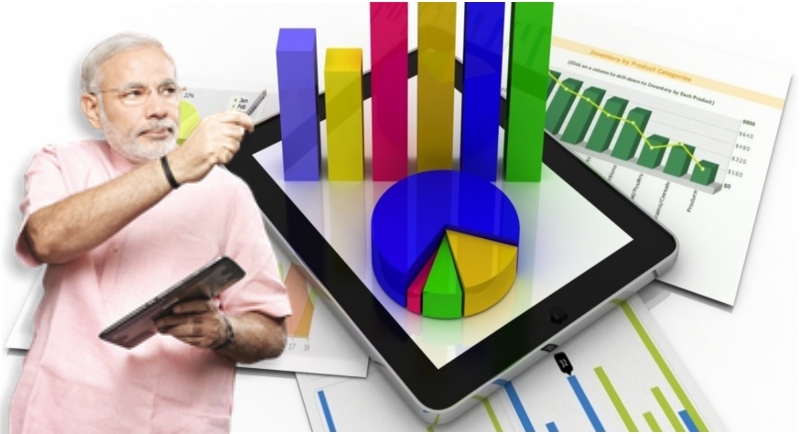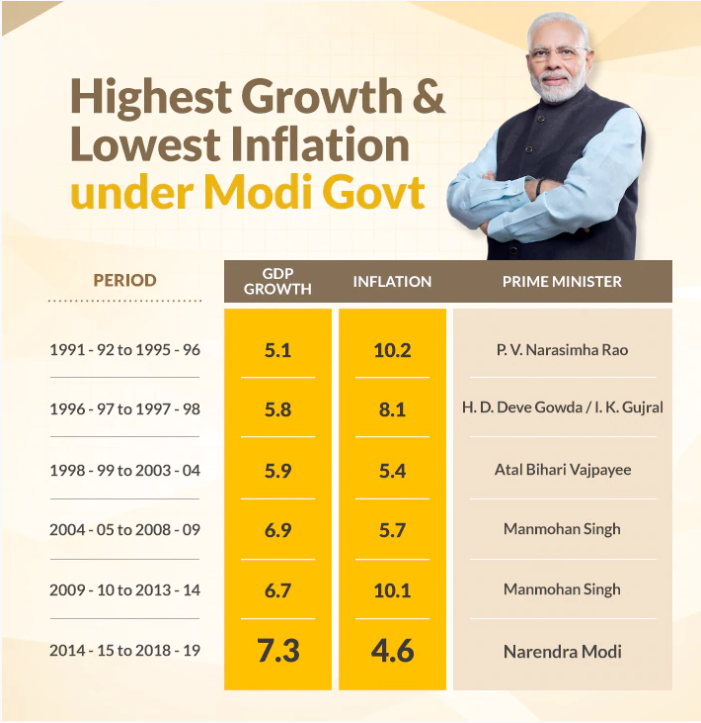Strong reigns and a strong economy..! India faces positive GDP growth marking financial stability..!
Total Views |
New Delhi, March 21: Narendra Modi have always been a box of surprises to all.. some see him a complex personality while others see him as a deity..! However, his work, dedication towards the nation and the aspirations he holds for country’s development are worth lauding. Flourishing the economic sector aligned in India, the Modi government has jumped up achieving the label of the fastest growing in the world.

Economy is considered to be doing good if it maintains inflation around 3% with a GDP growth rate of about 7-8%. Today, most economists favour a low and steady rate of inflation. Central banks or other monetary authorities in most of the countries are tasked with keeping their inter-bank lending rates at low stable levels, normally to a target annual rate of about 2% to 3%.
In India over the years, NDA governments have been able to bring Indian economy into that sweet spot. The rate of inflation measures in the period of last 5 years in India have declined to 4.6 per cent by February 2019 from an upwardly revised 10.1 per cent, measured in the Congress reigns. However the GDP rate in the recently past government measures 7.3 per cent, raised by 0.6 per cent as compared to that of 6.7 per cent from period between 2009 to 2013.
Inflation is usually defined as an increase in the overall price level. The term does not apply to the price level of just one good, but rather to how prices are doing overall. Whereas, the Consumer Price Index represents prices paid by consumers (or households). The inflation rate at the national level is computed by dividing the difference of CPIs in two years by the previous year’s CPI and then multiplying by 100.

However, GDP is a broad measurement of a nation’s overall economic activities. It is the monetary value of all the finished goods and services produced within a country's borders in a specific time period. The term constitutes nation’s all private and public consumption, government outlays, investments, private inventories, paid-in construction costs and the foreign balance of trade, citing the increased exports amidst the imports.
Under both NDA governments of Atal Bihari Vajpayee and Narendra Modi, retail inflation has remained low ranging between 5.4 per cent and now down to 4.6 per cent. The UPA governments in anyway have not been able to control the inflation during their terms, the base being higher inflation with lower GDP growth rate signifying bad economical attributes.
India’s annual economic growth surged to a more than two-year high of 8.2 per cent in the three months through, giving Prime Minister Narendra Modi’s government a political boost in the final year of his term before elections. PM Modi has however, been under pressure to make good his promise to deliver reforms and provide jobs to millions of youth entering the workforce each year as he faces a clutch campaigns ahead of the elections next month.